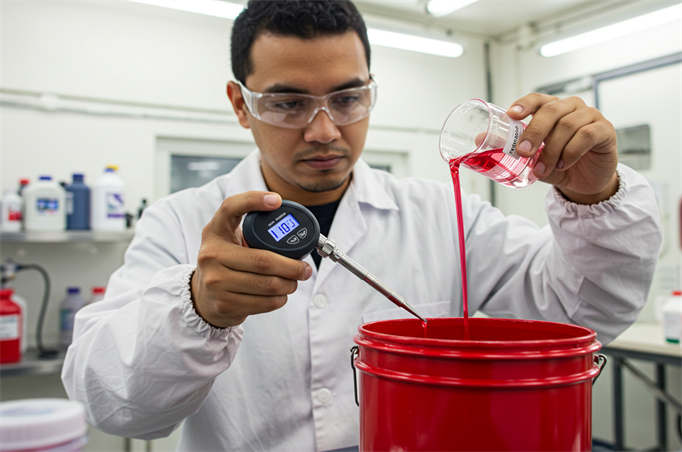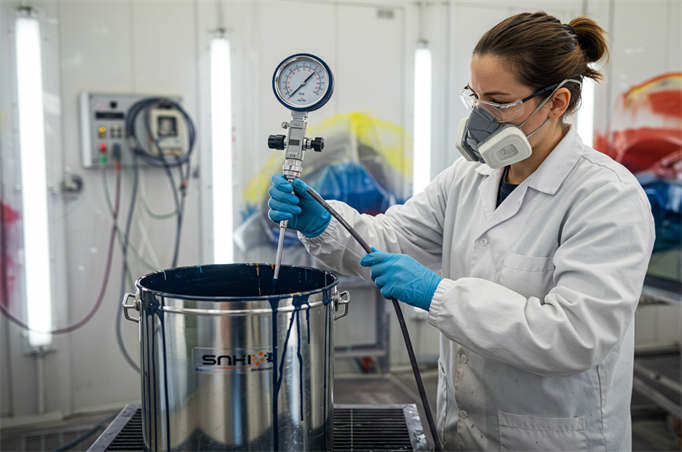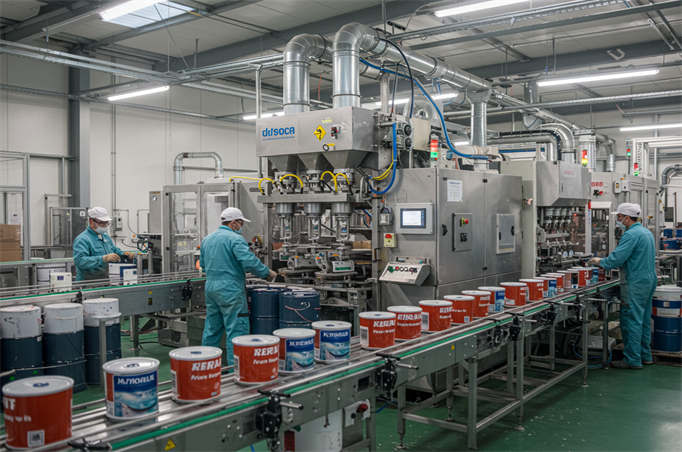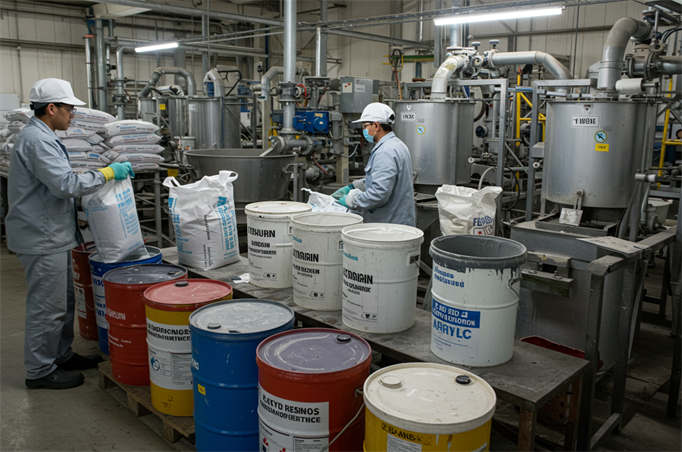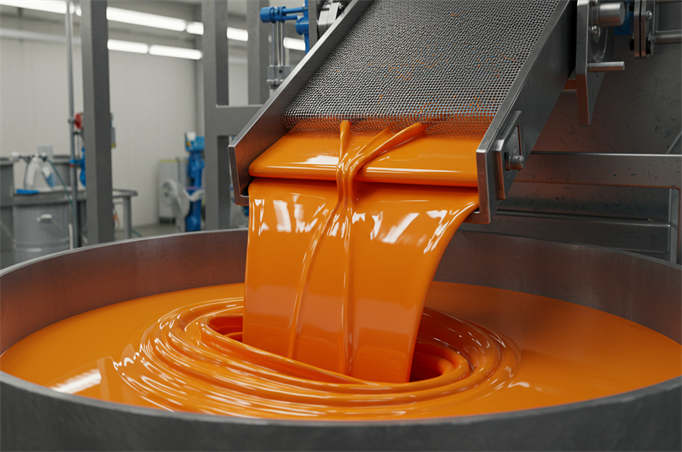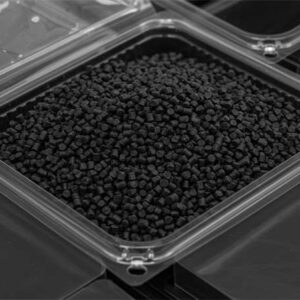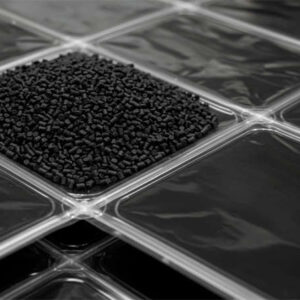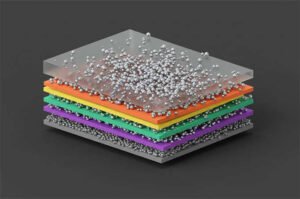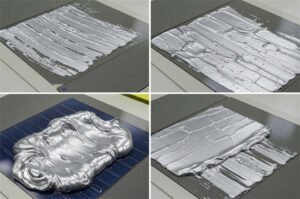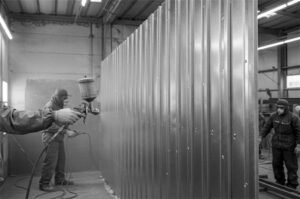Paint production involves a sophisticated series of steps, transforming raw materials into a finished product ready for use. This blog post walks you through the entire journey of paint manufacturing, breaking down each stage in detail. We also dive into the critical role of aluminum silver paste in paint production, showcasing its applications and standout qualities. Whether you work in the industry or want to learn more, this guide offers valuable insights into the fascinating world of paint creation.
How paint is made?
Producing paint requires precision and expertise. The process consists of several key stages:
Step 1: Preparing Raw Materials
Manufacturers start by gathering and preparing the essential components of paint:
- Pigments: Pigments determine the color of the paint. They include inorganic options like titanium dioxide (TiO₂), a widely used white pigment known for its excellent coverage and fine particle size. Titanium dioxide shines in white paint formulations. Organic pigments, such as ultramarine or chrome yellow, offer a variety of color choices. For vibrant hues, manufacturers turn to organic pigments like azo pigments, which create bold, colorful paints.
- Resins: Resins act as the film-forming backbone of paint, shaping its core properties. Alkyd resins, made from natural oils (like linseed oil) and poly acids (like phthalic anhydride), deliver flexibility, gloss, and adhesion through a polyesterification reaction. They suit general-purpose paints well. On the other hand, acrylic resins excel in weather resistance, chemical durability, and strength, making them ideal for high-performance industrial and automotive coatings.
- Solvents: Solvents adjust paint viscosity, ensuring easy application. Manufacturers commonly use hydrocarbon solvents (like gasoline or kerosene), ester solvents (such as butyl acetate), or ketone solvents (like toluene or methyl ethyl ketone). Water-based paints rely on water as the primary solvent, offering a more eco-friendly option.
- Additives: Additives enhance paint with unique features. For example, mildew inhibitors prevent mold during storage and use, leveling agents improve surface smoothness, and drying accelerators speed up the curing process—which is crucial for fast-drying paints.
Step 2: Pre-Mixing
The production kicks off with pre-mixing. Workers weigh pigments, resins, some solvents, and additives according to a specific formula and load them into a mixer. At this stage, the mixing speed stays slow—typically a few dozen revolutions per minute—to blend the materials evenly. For instance, when crafting a batch of white alkyd magnetic paint, technicians add titanium dioxide, alkyd resin, a small amount of solvent (like butyl acetate), and additives (like leveling agents) into a mixing tank and start the equipment for initial blending.
Step 3: Grinding and Dispersing
Next, the pre-mixed blend undergoes grinding and dispersing. This step ensures pigments distribute evenly within the resin and solvent while reducing particle size to the desired level. Manufacturers use equipment like sand mills, ball mills, or three-roll mills. In a sand mill, for example, grinding media (such as glass beads or zirconia beads), cut, press, and scrape the pigments under high-speed agitation. As the mixture cycles through the grinding chamber, pigment particles refine until they meet the target size—typically a few microns to tens of microns. This process enhances color uniformity and coverage.
Step 4: Paint Adjustment
After grinding, technicians adjust the paint. They tweak viscosity based on performance needs and application methods by adding the remaining solvent. They also introduce specialized additives—like corrosion-resistant agents for chemical durability—and fine-tune the color. Workers use pigments to correct any deviations to ensure consistency, especially in high-precision products like automotive paints. Professionals rely on colorimeters to compare the paint against standard color cards, adding trace amounts of pigment until the shade matches perfectly.
Step 5: Filtering and Packaging
Finally, technicians filter the adjusted paint to remove impurities, pigment clumps, or undispersed particles. They use filter screens or bags, with filtration precision varying by paint type and purpose. For instance, paints for precision instruments demand micron-level filtration. Once filtered, the paint moves to the packaging. Workers fill it into iron drums, plastic cans, or other containers suited to storage and transport needs, ensuring tight seals to prevent evaporation, moisture ingress, or contamination.
The Role and Benefits of Aluminum Silver Paste in Paint Production
Aluminum silver paste, a key inorganic metallic pigment, is vital in paint manufacturing. Its unique advantages make it a standout choice across industries. Here’s how it shines:
Applications of Aluminum Silver Paste
- Automotive Industry: Manufacturers add aluminum silver paste to car paints to create a striking metallic finish, boosting visual appeal. Luxury car coatings reflect sunlight with a dazzling silver gleam, emphasizing style and sophistication. Its corrosion resistance and heat reflection also protect vehicles, extending their lifespan.
- Construction Industry: Builders use aluminum silver paste in roofing coil coatings. Its reflective properties deflect sunlight, lowering roof temperatures and cutting air conditioning costs for energy savings. It also enhances exterior wall paints, improving weather resistance and decorative appeal.
- Appliance Industry: Appliance makers apply aluminum silver paste to products like refrigerators and washing machines. It adds a sleek, metallic sheen, making items look modern and upscale while boosting market competitiveness.
- Industrial Corrosion Protection: Industries rely on aluminum silver paste for its corrosion-shielding power. It strengthens coatings, protecting machinery and pipelines from harsh environments and prolonging their durability.
- Packaging Industry: Packaging designers use aluminum silver paste to craft metallic-textured products. In high-end cosmetics, food packaging, or gift boxes, it elevates perceived value and draws attention with its eye-catching finish.
Key Features of Aluminum Silver Paste
- Exceptional Optical Performance:
- High Gloss: Aluminum silver paste delivers a mirror-like shine, reflecting light for a brilliant effect. It brightens paint surfaces, enhancing their aesthetic appeal.
- Flip-Flop Effect: When light hits the coating from different angles, the color and gloss shift—a dynamic “flip-flop” effect. This adds depth and a 3D look to the finish.
- Superior Corrosion Shielding: The aluminum flakes in the paste overlap in layers within the coating, forming a barrier against oxygen and moisture. This boosts corrosion resistance, making it ideal for long-term surface protection.
- Excellent Light and Heat Reflection: Aluminum silver paste reflects infrared and UV rays, reducing heat buildup. It lowers temperatures, cuts heat absorption, and prevents damage on roofs, pipelines, or other high-heat surfaces.
- Strong Processability: Manufacturers produce aluminum silver paste efficiently at a reasonable cost, perfect for large-scale use. Its ductility allows grinding into desired flake sizes, offering flexibility. It also blends seamlessly with other paint components, solvents, and additives.
- Eco-Friendly and Safe: Modern aluminum silver paste meets stricter environmental standards. Producers now use high-flash-point solvents instead of flammable ones, reducing risks and aligning with today’s safety and sustainability goals.
Paint production blends science and creativity, combining diverse materials to craft a product that excels in function and beauty. Aluminum silver paste is a versatile powerhouse, bringing high gloss, corrosion resistance, and heat reflection to the mix. Its wide-ranging applications—from cars and buildings to appliances and packaging—highlight its ability to elevate performance and appeal. By exploring the paint-making process and the magic of aluminum silver paste, you gain a deeper appreciation for the innovation behind this everyday essential.

